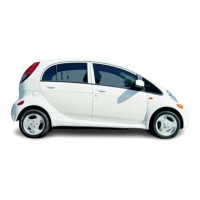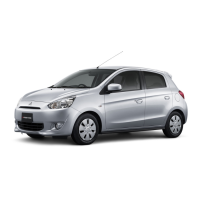o-14 Maintenance techniques, tools and workina facilities
Pliers - vise grip
Pliers - lineman’s
Pliers - needle nose
Pliers - snap-ring (internal and external)
Cold chisel - l/i-inch
Scribe
Scraper (made from flattened copper tubing)
Centerpunch
Pin punches (If1 6, l/8, 3/16-inch)
Steel rule/straightedge - 12 inch
Allen wrench set (l/8 to 3/8-inch or 4 mm to 10 mm)
A selection of files
Wire brush (large)
Jackstands (second set)
Jack (scissor or hydraulic type)
Note: Another tool which is often useful is an electric drill with a chuck ca-
pacity of 3/8-inch and a set of good quality drill bits.
Special tools
The tools in this list include those which are not used regularly, are ex-
pensive to buy, or which need to be used in accordance with their man-
ufacturer’s instructions. Unless these tools will be used frequently, it is not
very economical to purchase many of them. A consideration would be to
split the cost and use between yourself and a friend or friends. In addition,
most of these tools can be obtained from a tool rental shop on a temporary
basis. .
This list primarily contains only those tools and instruments widely
available to the public, and not those special tools produced by the vehicle
manufacturerfordistribution todealerservicedepartments. Occasionally,
references to the manufacturer’s special tools are included in the text of
this manual. Generally, an alternative method of doing the job without the
special tool is offered. However, sometimes there is no alternative to their
use. Where this is the case, and the tool cannot be purchased or bor-
rowed, the work should be turned over to the dealer service department
or an automotive repair shop.
Valve spring compressor
Piston ring groove cleaning too/
Piston ring compressor
Piston ring installation tool
Cylinder compression gauge
Cylinder ridge reamer
Cylinder surfacing hone
Cylinder bore gauge
Micrometers and/or dial calipers
Hydraulic lifter removal tool
WalQoint separator
Universal-type puller
Impact screwdriver
Dial indicator set
Stroboscopic timing light (inductive pick-up)
Hand operated vacuum/pressure pump
Tachometer/dwell meter
Universal electrical multimeter
Cable hoist
Brake spring removal and installation tools
Floor jack
Buying tools
For the do-it-yourselfer who is just starting to get involved in vehicle
maintenance and repair, there are a number of options available when
purchasing tools. If maintenance and minor repairis the extent of the work
to be done, the purchase of individual tools is satisfactory. If, on the other
hand, extensive work is planned, it would be a good idea to purchase a
modest tool setfrom one of the large retail chain stores. A set can usually
be bought at a substantial savings over the individual tool prices, and they
often come with a tool box. As additronal tools are needed, add-on sets,
individual tools and a larger tool box can be purchased to expand the tool
selection. Building a tool set gradually allows the cost of the tools to be
spread over a longer period of time and gives the mechanic the freedom
to choose only those tools that will actually be used.
Tool stores tilloften be the only source of some of the special tools
that are needed, but regardless of where tools are bought, try to avoid
cheap ones, especially when buying screwdrivers and sockets, because
they won’t last very long. The expense involved in replacing cheap tools
will eventually be greater than the initial cost of quality tools.
Care and maintenance of tools
Good tools are expensive, so it makes sense to treat them with re-
spect. Keep them clean and In usable condition and store them properly
when not in use. Always wipe off any dirt, grease or metal chips before put-
ting them away. Never leave tools lying around in the work area, Upon
completion of a job, always check closely under the hood for tools that may
have been left there so they won’t get lost during a test drive.
Some tools, such as screwdrivers, pliers, wrenches and sockets, can
be hung on a panel mounted on the garage or workshop wall, while others
should be kept in a tool box or tray. Measuring instruments, gauges, me-
ters, etc. must be carefully stored where they cannot be damaged by
weather or impact from other tools.
When tools are used with care and stored properly, they will last a very
long time. Even with the best of care, though, tools will wear out if used
frequently. When a tool is damaged or worn out, replace it. Subsequent
jobs will be safer and more enjoyable if you do.
Working facilities
Not to be overlooked when discussing tools is the workshop. If any-
thing more than routine maintenance is to be carried out, some sort of suit-
able work area is essential.
It is understood, andappreciated, that many home mechanics do not
have a good workshop orgarage available, and end up removing an en-
gine or doing major repairs outside. It is recommended, however, that the
overhaul or repair be completed under the cover of a roof.
A clean, flat workbench or table of comfortable working height is an ab-
solute necessrty. The workbench should be equipped with a vise that has
a jaw opening of at least four inches.
As mentioned previously, some clean, dry storage space is also re-
quired for tools, as well as the lubricants, fluids, cleaning solvents, etc.
which soon become necessary;
Sometimes waste oil and fluids drained from the engine or cooling
system during normal maintenance or repairs, present a disposal prob-
lem. To avoid pouring them on the ground or into a sewage system, pour
the used fluids into large contamers. seal them with caps and take them
to an authorized disposal site or recycling center. Plastic jugs, such as old
antifreeze containers, are ideal for this purpose.
Always keep a supply of old newspapers and clean rags available. Old
towels are excellent for mopping up spills. Many mechanics use rolls of
paper towels for most work because they are readily available and dispos-
able. To help keep the area under the vehicle clean, a large cardboard box
can be cut open and flattened to protect the garage or shop floor.
Whenever working over a painted surface, such as when leaning over
a fender to service something under the hood. always cover it with an old
blanket or bedspread to protect the finish. Vinyl covered pads, made espe-
cially for this purpose, are available at auto parts stores.

